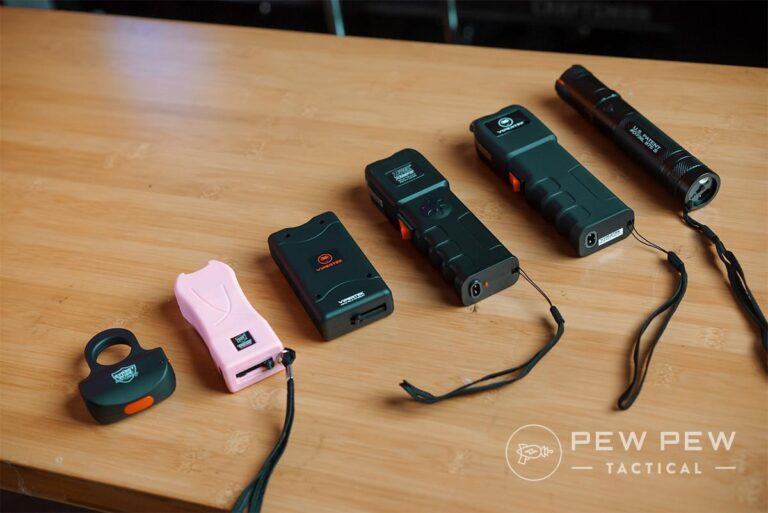Table of Contents
- Understanding the Functionality and Safety Features of Your Stun Gun
- Preparing a Controlled Environment for Safe Testing
- Step-by-Step Procedures to Test Your Stun Gun Without Exposure
- Essential Precautions and After-Test Maintenance Tips
- In Retrospect
Understanding the Functionality and Safety Features of Your Stun Gun
To ensure your stun gun operates effectively while minimizing any chance of accidental injury, it’s essential to familiarize yourself with its core components and built-in safety mechanisms. Most modern stun guns feature a safety switch that prevents the device from discharging unintentionally. This switch is usually designed to be easily accessible but requires deliberate activation, helping users avoid accidental shocks during handling or transportation. Additionally, stun guns often have an activation button that must be pressed continuously to maintain the electric charge, allowing the user complete control over the duration of the shock delivered. Understanding these features not only enhances your confidence in using the device but also reinforces responsible ownership.
Before proceeding with any testing, ensure that you carry out these steps to avoid any risk:
- Inspect the device for signs of damage or wear, especially around the electrodes and battery compartment.
- Engage the safety switch when not actively testing to prevent accidental discharge.
- Test the stun gun only in a safe, controlled environment away from people and pets.
- Use insulated gloves or hold the stun gun via a non-conductive handle if possible.
By respecting these safety protocols and appreciating the functionality of your device, you ensure a responsible and hazard-free experience while maintaining the stun gun’s effectiveness for personal protection.
Preparing a Controlled Environment for Safe Testing
Creating a secure area to test your stun gun is crucial to prevent accidents and ensure accurate results. Choose a location that is well-ventilated and away from flammable materials or liquids. Ideally, the space should be indoors with a non-conductive surface such as a wood or plastic table to minimize any unintended electrical conduction. Keep pets, children, and uninformed individuals out of the testing zone to maintain safety and avoid distractions.
Equip the area with essential safety gear and tools before proceeding. Consider using:
- Rubber gloves and insulated mats to safeguard against shocks.
- Protective eyewear to shield your eyes from potential sparks or debris.
- A grounded metal plate as a target to discharge your device safely.
- Clear signage alerting others of a live electrical test in progress.
Step-by-Step Procedures to Test Your Stun Gun Without Exposure
Begin by preparing a safe environment to test your stun gun without any risk of exposure or injury. Choose a location free from flammable materials, electronics, or bystanders. Wear protective gloves and ensure your device is fully charged and in proper working order. Instead of direct testing, aim the stun gun at a metallic object like a steel plate or a dedicated testing pad specially designed to absorb the charge. This method allows you to observe the electric arc and sound without any physical contact or danger.
Next, conduct a performance check by activating the stun gun briefly, but only for a few seconds at a time. Keep your arms steady to avoid accidental misfires and monitor the device’s output carefully. You’ll notice the characteristic crackling sound and visible sparks confirming the stun gun’s functionality. Always follow manufacturer guidelines for testing frequency and duration to maintain the device’s reliability and safety. By adhering to these practices, you ensure your stun gun remains effective without unnecessary risk to yourself or others.
Essential Precautions and After-Test Maintenance Tips
When handling your stun gun for testing, always prioritize safety by adhering to a set of critical precautions. Ensure you perform tests in a controlled environment away from children, pets, or any moisture-prone areas. Wear protective gear such as insulated gloves and safety glasses to shield yourself from accidental shocks or sparks. Avoid testing near flammable materials or electronic devices to prevent unintended damage. Additionally, double-check that your stun gun is fully charged but not overcharged, as this can affect performance and safety. Disconnect any external power sources during testing to eliminate risks of electrical surges.
After completing your test, proper maintenance is key to prolong your stun gun’s life and ensure its reliability. Start by wiping down the surface with a dry, soft cloth to remove dust and residues without introducing moisture. Check terminals and connectors for signs of corrosion or wear; a gentle application of contact cleaner can be beneficial, but avoid wetting the internal components. Store your stun gun in a cool, dry place inside a protective case to prevent accidental damage. Finally, schedule regular battery inspections and replacements according to the manufacturer’s recommendations to keep your device operating at its best.
In Retrospect
Testing your stun gun safely is essential to ensure it functions properly when you need it most, without putting yourself or others at risk. By following the guidelines outlined in this article-using proper safety gear, conducting tests in controlled environments, and adhering to legal regulations-you can maintain confidence in your device’s reliability. Remember, responsible handling is key to maximizing the effectiveness of your stun gun while minimizing any potential hazards. Stay safe, stay prepared, and always prioritize caution when testing your personal defense tools.Check Our Other Blogs
- StunGun – Your Trusted Source for Stun Guns, Laws, and Self-Defense Tips
- PepperSprayLaws – Your Trusted Resource for Pepper Spray Information
- StunGunLaws – Your Trusted Guide to Stun Gun Legality and Safety





